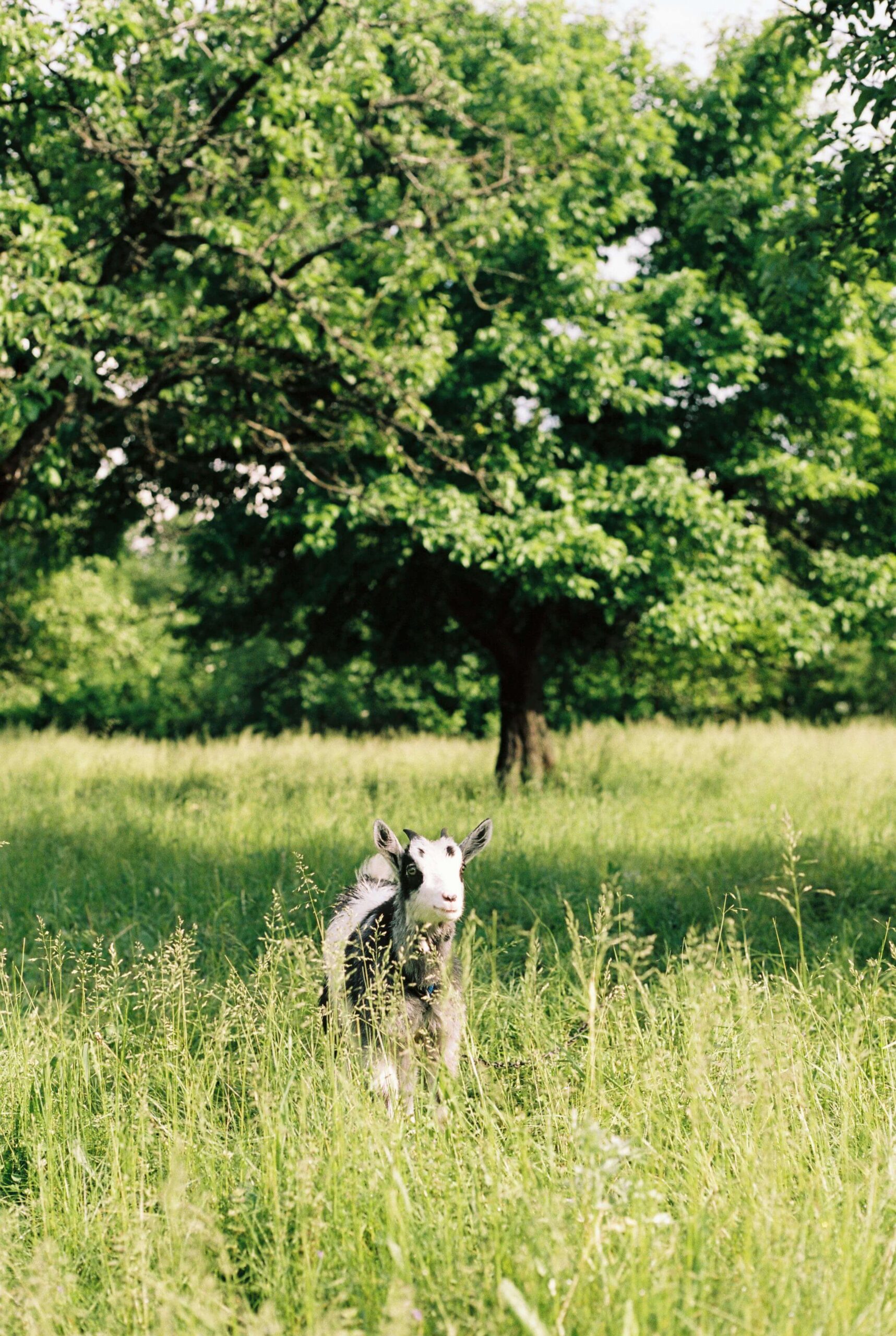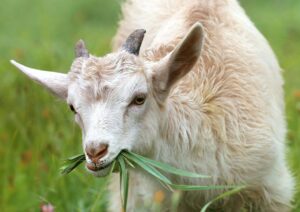Harnessing Nature’s Gardeners: The Art and Science of Weed Management with Goats

Introduction
Weeds, those resilient, opportunistic plants, have long vexed farmers, gardeners, and land managers.
Their rapid growth, prolific seed production, and ability to outcompete desired vegetation make them a persistent challenge in agricultural, horticultural, and natural ecosystems.
Traditional methods of weed control, including chemical herbicides, mechanical cultivation, and manual labor, carry their own set of drawbacks, from environmental pollution to soil degradation to labor costs.
In recent years, however, a natural and sustainable alternative has emerged: goat grazing.
The Rise of Goat Grazing as a Weed Management Strategy
The use of goats for vegetation management is not a new concept. For centuries, goats have been valued for their ability to clear land, control vegetation, and provide a source of meat, milk, and fiber for human communities.
However, it is only in recent decades that their potential as weed managers has gained wider recognition. Today, farmers, ranchers, conservationists, and urban planners alike are turning to goats as eco-friendly, cost-effective, and efficient weed control agents.
The Mechanisms Behind Goat Grazing
To understand why goats are effective weed managers, one must delve into their biology, behavior, and dietary preferences.
Unlike strict grazers such as cattle or sheep, which primarily consume grasses, goats are browsers, preferring to feed on a diverse array of leaves, twigs, shrubs, and woody vegetation.
This broad diet allows them to target a wide range of weed species, including many that are less palatable to other livestock.
Goats possess a unique digestive system, characterized by a large, multi-chambered stomach called the rumen.
Within the rumen, a complex community of microorganisms breaks down cellulose and other tough plant fibers, extracting nutrients and energy from plant material that would be indigestible to many other animals.
This digestive efficiency enables goats to thrive on a diet of fibrous and woody plants, making them well-suited for managing dense, overgrown vegetation.
In addition to their digestive prowess, goats are highly selective feeders, capable of discerning between desirable vegetation and noxious weeds. This selectivity allows them to target weed-infested areas while sparing valuable crops, native plants, and other desirable species.
Furthermore, goats’ nimble agility and small size enable them to access steep slopes, rocky terrain, and other challenging landscapes where traditional machinery may be impractical or ineffective.

The Practicalities of Goat Grazing for Weed Management
Implementing a goat grazing program for weed control involves careful planning, management, and coordination. Several factors must be considered, including herd size, stocking density, grazing duration, and rotation patterns.
Herd size should be appropriate to the size of the target area and the intensity of weed pressure.
Too few goats may result in incomplete weed control, while too many may lead to overgrazing and soil compaction. Stocking density—the number of goats per unit area—should be carefully managed to ensure thorough vegetation removal without causing damage to soil or desirable vegetation.
Grazing duration depends on factors such as weed species, growth stage, and desired level of control.
In some cases, a single grazing event may be sufficient to suppress weeds, while in others, multiple grazing cycles may be necessary to achieve desired results. Grazing periods typically range from a few days to several weeks, depending on the specific objectives of the weed management program.
Strategic rotation of grazing areas is essential to prevent overgrazing and promote vegetation recovery. By dividing the landscape into smaller paddocks and rotating goats between them, land managers can ensure more uniform weed control and minimize negative impacts on soil and vegetation.
Rotational grazing also helps distribute nutrients and organic matter more evenly across the landscape, improving soil fertility and promoting healthy plant growth.
Economic Viability and Social Impacts
Beyond the ecological benefits, goat grazing for weed management can also have positive economic and social impacts.
Economically, goat grazing presents opportunities for farmers to diversify their income streams and utilize underutilized or marginal land. In many cases, goats can thrive on landscapes that are unsuitable for traditional agriculture, such as steep slopes, rocky terrain, or areas with poor soil quality.
 By incorporating goat grazing into their operations, farmers can generate additional revenue without significant investments in infrastructure or inputs.
By incorporating goat grazing into their operations, farmers can generate additional revenue without significant investments in infrastructure or inputs.
Moreover, the reduced reliance on chemical herbicides can lead to cost savings over time, as well as potential long-term improvements in soil health and productivity.
From a social perspective, goat grazing initiatives can strengthen community ties and promote cultural heritage. In regions where goat herding is a traditional practice, the reintroduction of goats for weed management can help revitalize rural economies and preserve cultural traditions.
Furthermore, goat grazing projects often involve collaboration between farmers, conservationists, local governments, and community organizations, fostering partnerships and shared stewardship of the land.
Community members may also benefit from educational opportunities and hands-on experiences with goats, deepening their understanding of sustainable agriculture and ecological restoration.
Benefits of Goat Grazing for Weed Management
The adoption of goat grazing for weed management offers a host of benefits, both ecological and practical:
- Environmentally Friendly: Goat grazing eliminates the need for chemical herbicides, reducing the risk of water and soil contamination. It also minimizes soil disturbance compared to mechanical methods like tilling, preserving soil structure and microbial communities.
- Cost-Effective: While initial setup costs may be involved, goat grazing can be a cost-effective weed management strategy in the long run, especially for large or difficult-to-access areas. It also reduces the need for manual labor, saving both time and money.
- Enhanced Biodiversity: By selectively targeting invasive weeds, goat grazing promotes the growth of native vegetation, thereby enhancing habitat diversity and supporting local wildlife populations.
- Nutrient Cycling: As goats consume and digest plant material, they excrete nutrient-rich manure, which serves as a natural fertilizer, replenishing soil fertility and promoting healthy plant growth.
- Reduced Fire Hazard: In wildfire-prone regions, goat grazing can help reduce the accumulation of dry, flammable vegetation, thereby lowering the risk of catastrophic wildfires.
- Community Engagement: Goat grazing initiatives often attract public interest and support, providing educational opportunities for local communities and fostering a deeper connection to the land.
Challenges and Considerations
While goat grazing holds great promise as a sustainable weed management strategy, several challenges and considerations must be addressed:
- Species Compatibility: Not all plant species are suitable for goat consumption, and some may even be toxic to them. Careful consideration must be given to the selection of grazing areas and the monitoring of goat diets to prevent accidental ingestion of harmful plants.
- Infrastructure and Management: Setting up and managing a goat grazing program requires investment in fencing, water sources, shelter, and herd management infrastructure. Effective rotational grazing strategies also demand careful planning and monitoring to avoid overgrazing.
- Regulatory Considerations: In some areas, regulatory restrictions or zoning ordinances may limit the use of goats for weed management. Land managers should familiarize themselves with local regulations and seek necessary permits or approvals before implementing goat grazing initiatives.
- Predation Risk: Depending on the local predator population, goats may be vulnerable to predation by coyotes, dogs, or other carnivores. Adequate predator deterrents, such as guardian animals or secure fencing, may be necessary to protect the goats.
- Public Perception: Despite the growing popularity of goat grazing, some individuals may have concerns about the presence of livestock in urban or recreational areas. Effective communication and community engagement can help address these concerns and garner support for goat grazing initiatives.
Research and Innovation
As interest in goat grazing for weed management continues to grow, so too does the need for research, innovation, and knowledge exchange.
Researchers are exploring ways to optimize grazing strategies, enhance goat health and welfare, and quantify the ecological and economic impacts of goat grazing on weed-infested landscapes.
Advances in fencing technology, remote monitoring systems, and GPS tracking devices are making it easier for farmers and land managers to manage grazing activities and track the effectiveness of weed control efforts.
In addition to traditional research methods, citizen science initiatives and participatory monitoring programs are engaging stakeholders in data collection and analysis, empowering communities to contribute to ongoing research and monitoring efforts.
Knowledge sharing platforms, workshops, and field demonstrations are also helping to disseminate best practices and lessons learned from goat grazing projects around the world, facilitating the adoption of this innovative weed management strategy in diverse contexts.
Case Studies and Success Stories
Numerous case studies around the world demonstrate the efficacy of goat grazing for weed management in diverse environments:
- Los Angeles County, California: The Mountains Recreation and Conservation Authority employs goats to control invasive plant species in urban parks and natural areas, reducing the need for herbicides and manual labor while engaging the community in conservation efforts.
- New Zealand: In environmentally sensitive areas such as coastal dunes and wetlands, conservation organizations utilize goats to suppress invasive weeds like gorse and broom, restoring native vegetation and enhancing habitat quality for threatened species.
- Greece: Traditional goat herding practices in rural landscapes help prevent the spread of invasive plant species, preserving biodiversity and maintaining the cultural heritage of pastoral communities.
- United Kingdom: Goat grazing initiatives on conservation grazing sites and nature reserves contribute to habitat restoration and management, supporting rare plant species and enhancing ecosystem resilience.

Conclusion
Goat grazing represents a sustainable and environmentally friendly approach to weed management that harnesses the natural instincts and behaviors of these versatile animals.
By leveraging their browsing preferences, digestive capabilities, and selective feeding habits, land managers can effectively suppress weed growth, promote biodiversity, and enhance ecosystem health across a wide range of landscapes.
While challenges such as species compatibility, infrastructure requirements, and regulatory considerations must be addressed, the benefits of goat grazing for weed management are increasingly recognized and embraced by farmers, conservationists, and communities worldwide.
As we strive to cultivate healthier, more resilient landscapes, goats emerge as invaluable allies in the ongoing battle against invasive weeds, demonstrating once again the power of nature’s gardeners to shape and sustain the world around us.